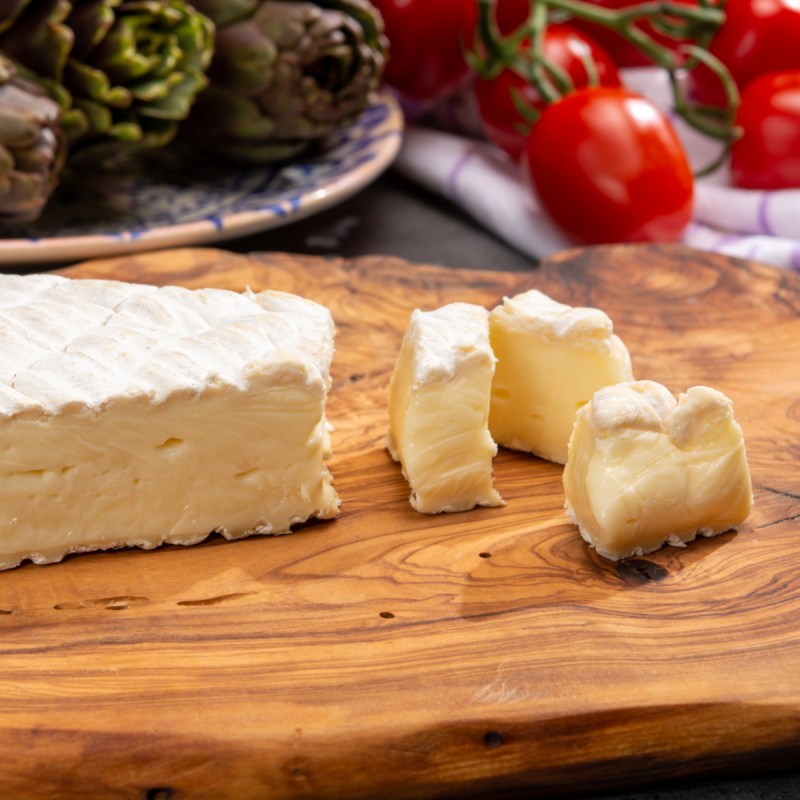
The classic French cheese Brie, a staple of any cheese platter or course, is sometimes known as the Paris cheese. The two cities that produce the best and most authentic Brie are Melun and Meaux. Both are located in the Ile de France region, which encompasses Paris and its suburbs. Only 25 miles from Paris (approximately 30 minutes by train), these cities have a lot more to offer than Brie — although if you are a cheese lover, the cheese might be incentive enough.
Videos by TravelAwaits
Below are just a few of the interesting things to do in Melun and Meaux. Both cities are off the beaten path and not visited by many tourists.

Melun
The history of Melun goes back to Roman times, when the city was called Melodunum. It flourished during the medieval period, when the kings of France favored it as their residence. Geographically, Melun is located close to the forest of Fontainebleau, the second-largest forest in France and a former royal hunting ground.
Collegiale Notre Dame
Like Notre Dame in Paris, Collegiale Notre Dame in Melun is set on a small island in the middle of the Seine. The church was constructed between 1016 and 1031, during the reign of King Robert II. Romanesque in style, the church has a 150-foot-long nave with tall archways and windows. It originally housed the Melun Diptych, a two-panel oil painting by Jean Fouquet dating to 1452 and considered one of the finest religious works of art in the western hemisphere. The diptych has since been split up between Antwerp and Berlin.
Vaux Le Vicomte
The major attraction of Melun is the spectacular Vaux le Vicomte chateau. Nicolas Fouquet, the superintendent of finances under King Louis XIV, bought the estate and built the most spectacular chateau and gardens in France there between 1658 and 1651.
When King Louis XIV saw the finished palace, he was so envious of its beauty that he confiscated the palace and its contents and had Fouquet put in prison. He then hired the architect (Louis Le Vau), landscape designer (Andre Le Notre), and painter/decorator (Charles Le Brun) who had worked on Vaux le Vicomte to design the Palace of Versailles.
Today, the chateau is privately owned and is open to the public. Besides visits to the chateau and the gorgeous gardens, Vaux le Vicomte sponsors themed events all year long. Spend a summer evening sipping Champagne in the garden with the chateau lit by candlelight, or enjoy the fantastic Christmas spectacle, decorations, and events in December.
Musee De La Gendarmerie
In 2015, the national police training school in Melun opened its archives as a museum, the Musee De La Gendarmerie. The fascinating contents include 10,000 images and 30,000 objects pertaining to the history of police training.

Meaux
The city of Meaux was the site of the Siege of Meaux, which took place between 1421 and 1422 during the Hundred Years’ War between France and England. In September of 1914, it was the site of the First Battle of the Marne. During this conflict, which changed the course of World War I, the French bravely fought off the Germans who had arrived at the gates of the city.
Maison De Brie De Meaux
Since Meaux is one of the major producers of Brie cheese, it’s fitting that the city would be home to a museum dedicated to it. At La Maison du Brie de Meaux, you’ll learn about the cheese’s history, the cheesemaking process (from the milking of the cows to the aging process to the finished product — a thick, creamy wheel of Brie), and the strict government rules about the content of the cheese.
If you visit Meaux between April and September, you’ll get to try the Brie at its best, when it’s perfectly aged.
Pro Tip: Meaux is also famous for a superior-grain mustard that comes in decorative ceramic pots.
American Monument
In 1932, the U.S. put up a monument honoring the fallen soldiers of the First Battle of the Marne. The formidable 85-foot-tall landmark depicts Liberty in Tears and was sculpted by Frederick William MacMonnies, who attended the prestigious Ecole des Beaux Arts in Paris. The American Monument stands next to the Musee de la Grande Guerre.
Musee De La Grande Guerre
Military history buffs will want to spend some time at the Musee de la Grande Guerre. Opened on Armistice Day, November 11, 2011, the World War I-focused museum features replicas of battlefields outfitted with French and German trenches and the no-go zones in between. Visitors can also take in multimedia presentations with sound and light effects.
Musee Bossuet
A museum of history and art, the Musee Bossuet was once the stately episcopal palace of Bishop Jacques-Benigne Lignel Bossuet, who was the court preacher to King Louis XIV.
Built in 1160, the palace was remodeled in the 17th century and includes both Gothic-style and Renaissance-style features. The museum has a large collection of 16th-to-19th-century paintings and sculptures. Each room represents a significant artistic period or movement; there are rooms dedicated to Mannerism, the Classical period, and the 18th and 19th centuries. There’s also a room dedicated to Bishop Bossuet.
Make sure to visit the beautiful Bossuet Gardens next to the palace. The formal gardens are composed of four flower beds inside a line of box hedges, and there’s a row of lime trees that creates shade in the summer.
Pro Tip: Trains from Paris to Melun and Meaux depart from the Gare de Lyon station.
